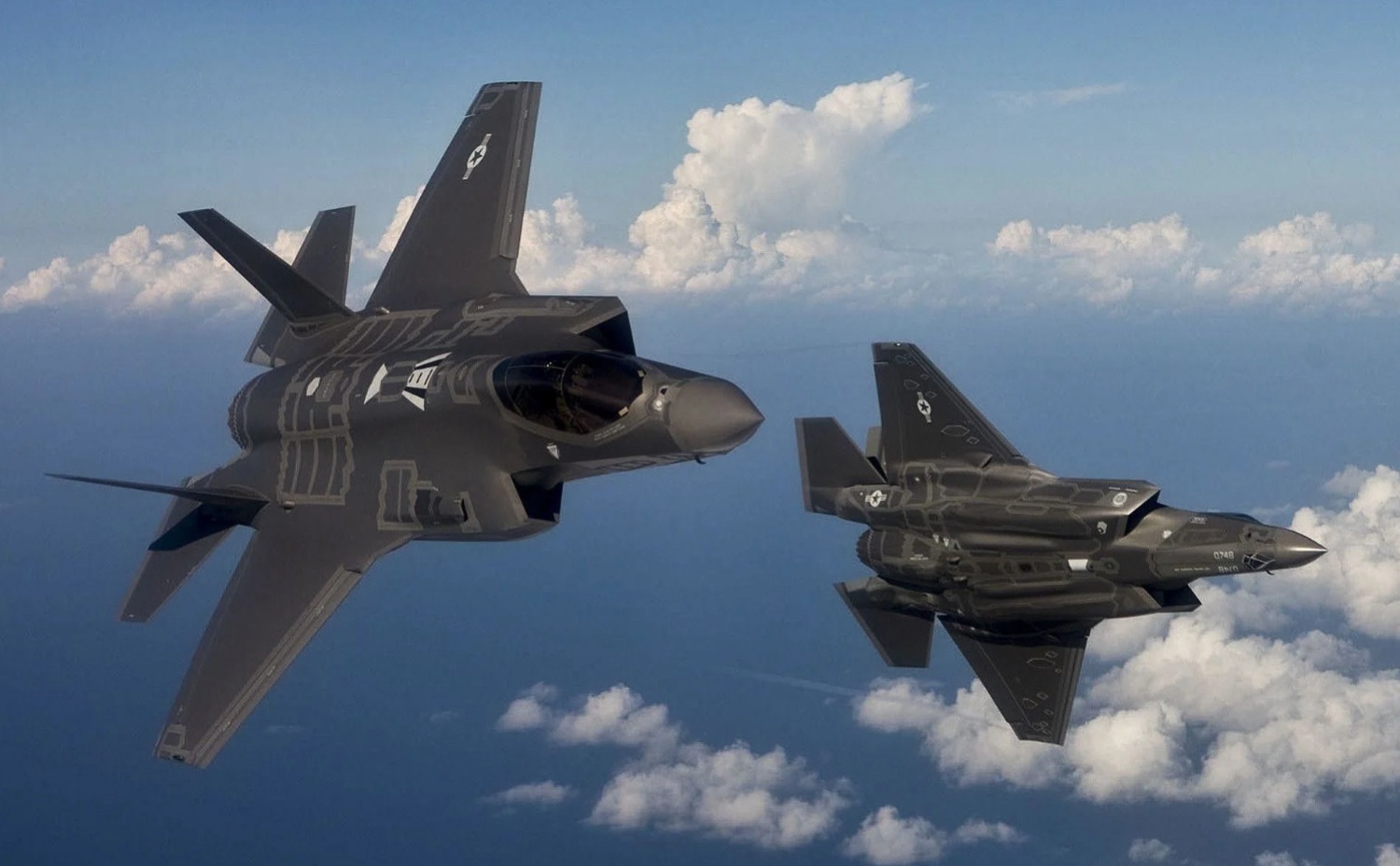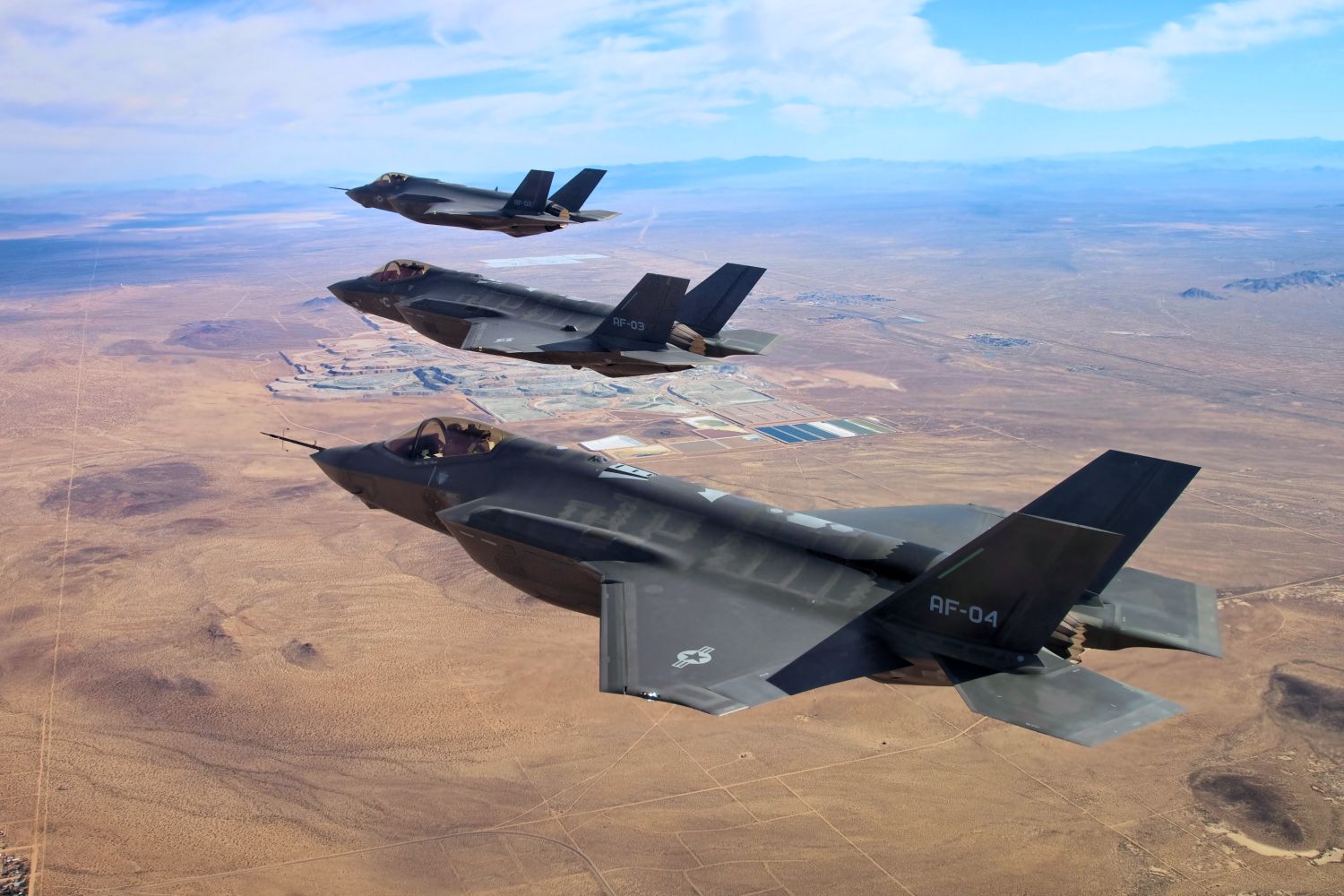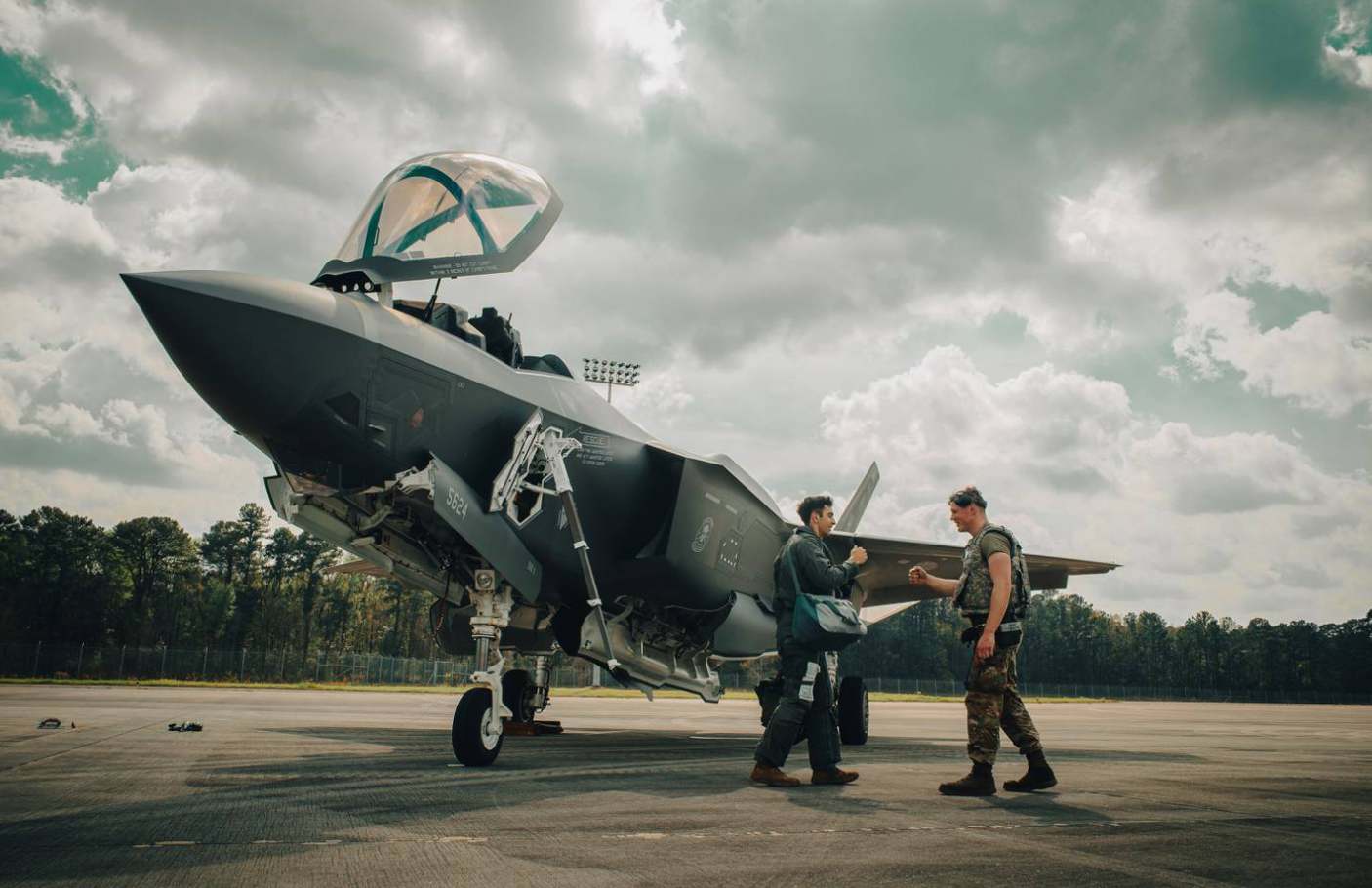The United States just approved the sale of 24 Lockheed Martin F-35A Joint Strike Fighters to the Czech Republic. The deal will include a plethora of weapons and spares in a contract worth around US$5.6 billion.
The purchase also includes 25 Pratt & Whitney F135-PW-100 engines. It is meant to strengthen NATO operations in the region. They had chosen the fifth-generation fighter over the Lockheed F-16 and Saab Gripen JAS 39 fighter. Interestingly, Czech Air Force already operates 12 Gripen jets.
In another development, Israel announced purchasing 25 more F-35 stealth jets in a US$3 billion deal. It will bring the number of F-35s in Israel’s Air Force to 75.
The deal will be financed through Israel’s defense aid package from the United States. Israel was the first country outside the United States to acquire the F-35, called “Adir” (Mighty) in Hebrew.
Also, in May 2018, Israel was the first to use the aircraft in combat. Lockheed Martin and engine manufacturer Pratt & Whitney have agreed to allow Israeli defense companies to make aircraft components.
Lockheed Martin F-35 Lightning II
The F-35 is a single-seat, single-engine, all-weather, stealth multirole combat aircraft designed for air superiority and strike missions. It also has electronic warfare and intelligence, surveillance, and reconnaissance capabilities.
The principal partners in the program with Lockheed Martin are Northrop Grumman and BAE Systems. The three main variants are the conventional take-off and landing (CTOL) F-35A, the short take-off and vertical-landing (STOVL) F-35B, and the carrier-based (CV/CATOBAR) F-35C. The aircraft won the Joint Strike Fighter (JSF) program competition in 2001.
Mostly funded by the US, others who made financial contributions included the United Kingdom, Australia, Canada, Italy, Norway, Denmark, the Netherlands, and Turkey. Turkey was excluded after it procured the Russian S-400 air defense system. The UK was the only Tier 1 partner.

The technology demonstrator X-35A first flew in October 2000. The F-35 prototype aircraft first flew in 2006. The F-35B entered service with the US Marine Corps in July 2015, the US Air Force F-35A in August 2016, and the US Navy F-35C in February 2019. The aircraft has a design service life of 8,000 hours.
The very extensive initial flight test phase was completed in April 2018. The US proposes to buy around 2,500 F-35s through 2044 and operate till 2070.
As of June 2023, nearly 950 have been built. The aircraft was expected to eventually replace a large number of US multirole and strike fighters such as the Harrier, F-16, F/A-18, A-10, and F-117.
F-35 Design Features
The F-35 has a wing-tail configuration with two vertical stabilizers canted for stealth. Composites comprise 35 percent of airframe weight. At 13,300 kg empty weight, the F-35 is considerably heavier than the lightweight fighters (F-16, 8,573 kg) it replaces.
Internal weapon carriage reduces drag, and the powerful F135 (191 kN) single-engine allows Mach 1.6 speed with a full internal payload.
The thrust/weight at 0.87 at gross weight (1.07 at loaded weight with 50% internal fuel) compares with 1.095 (1.24) respectively for F-16s. The F135-PW-600 variant for the F-35B incorporates the Shaft-Driven Lift Fan (SDLF) to allow STOVL operations. Roll control during slow flight is achieved by diverting unheated engine bypass air through wing-mounted thrust nozzles.
Aircraft have great high angle-of-attack characteristics and maneuver agility. The avionics and sensor fusion enhances situational awareness and net-centricity. The F-35 has better stealth features than the F-22.

The APG-81 AESA radar is among the best in the class. The helmet display is a key piece of the F-35’s human-machine interface, allowing “see-through” the aircraft view and off-bore-sight cuing of sensors and weapons.
The aircraft has a top-end electronic warfare system. F-35 has been tested in a manned-unmanned teaming role.
Weapons Platform
The aircraft has two internal weapons bays with two weapons stations each. For non-stealthy missions, the aircraft can use six external weapons stations. Carriage capacity is 2,600 kg on internal hardpoints, and 6,800 kg on external, totaling 8,400 kg.
These can carry combinations of the latest American stand-off weapons and air-to-air missiles. The internal stations can carry the AIM-120 AMRAAM and, eventually, the AIM-260 JATM. The aircraft also carries chaffs, flares, and towed decoys.
A weapon rack enabling the internal outboard station to carry two AIM-120s is being developed. It will increase the internal air-to-air payload to six missiles in Block 4.
Nuclear weapons delivery via internal carriage of the B61 nuclear bomb is planned for Block 4B in 2024. Hypersonic missiles and direct energy weapons are being considered as future upgrades.
F-35 Further Development
The aircraft is currently at Block 3F standard. The plan is to continually upgrade under Continuous Capability Development and Delivery (C2D2) plan over its lifetime.
The next stage will be Block 4, which will integrate additional weapons, refresh the avionics, and improve ESM capabilities. Also, have agile software, more powerful and efficient adaptive cycle engines, and a directional infrared countermeasures suite.
GE and P&W were awarded contracts to develop a 200kN thrust class engine and improve the baseline F135. The capability packages are planned to be incorporated by the mid-2020s. GE expects that the A100 can enter service with the F-35A and C in 2027 at the earliest.
Aircraft-Related Concerns
The program did witness scrutiny and criticism for bloating costs, software glitches, and delayed deliveries. The three variants share just 25 percent of their parts, far below the anticipated commonality of 70 percent, thus adding program cost. At around $100 million per aircraft, the F-35 is expensive.
In 2001, the program was expected to cost about $200 billion for acquisition in base-year 2002 dollars. By 2017, delays and cost overruns had pushed the F-35 program’s expected acquisition costs to US$406.5 billion, with total lifetime cost, including operations and maintenance (till 2070), to US$1.5 trillion in then-year dollars. The full-rate production has begun only in 2023.
It is also maintenance-intensive. The F-35A’s cost per flight hour (CPFH) was $35,000 in 2019, compared to US$17,716 for the A-10 and US$22,514 for F-16C. Lockheed Martin hopes to reduce it to US$25,000 by 2025. Many question the idea of using the same basic design to create many variants, thus making compromises.
It also meant putting all eggs in a single basket. There was no backup, and delays and costs had to be lived with. Some analysts believe it is much less reliable at a 69 percent readiness rate than the much lighter and cheaper F-16 it was meant to replace. Around 12 F-35s have been lost to accidents to date.
Meanwhile, China has imposed export control on gallium & germanium items. This could impact the production of F-35s and other AESA radar-equipped aircraft.
Gallium is the only element used in AESA radars, and China produces 95% of Gallium. Like the F-22, the F-35 has been targeted through cyber-attacks for intellectual property design theft by China.
Operating Nations
The militaries of Australia, Belgium, Canada, Denmark, Finland, Germany, Israel, Italy, Japan, Netherlands, Norway, Poland, South Korea, Singapore, Switzerland, the United Kingdom, and the United States currently operate F35s.
Taiwan was once keen to acquire F-35s. However, the US was reluctant to sell because of the risk of compromising classified data if the Chinese military officials got access to the aircraft.
The US turned down Thailand’s desire to buy 8 to 12 aircraft in May 2023 and offered F-16 Block 70/72 Viper and F-15E Strike Eagle fighters instead.
F-35 sales to Turkey, a founding partner in the program, were banned after it bought the Russian S-400 air defense system.
The United Arab Emirates initially wanted to purchase F-35s but later withdrew as it was not ready to agree to the additional terms imposed by the US.
Operational Deployments
USMC F-35Bs participated in their first Red Flag exercise in July 2016 and flew 67 sorties. The first F-35B foreign deployment was at MCAS Iwakuni, Japan in 2017.
Combat employment began in July 2018 from the amphibious assault ship USS Essex, with the first combat strike on 27 September 2018 against a Taliban target in Afghanistan.
F-35Bs operated from temporary bases in the allied territory within hostile missile engagement zones. The first USMC F-35C squadron became operational in July 2021 and was first deployed on board a carrier in January 2022.
The USAF F-35As conducted their first Red Flag exercise in 2017 and reportedly scored a kill ratio of 15:1 against F-16 aggressors. The first USAF F-35A deployment occurred in April 2019 to Al Dhafra Air Base, UAE, and was first used in combat in an airstrike on an Islamic State tunnel network in northern Iraq in the same month.

The first combat use of an RAF F-35B was in June 2019 as armed reconnaissance flights searching for Islamic State targets in Iraq and Syria. Since January 2022, Norway’s F-35As replaced its F-16s for the NATO quick reaction alert mission in the high north.
The Israeli Air Force reportedly flew a test mission of three F-35Is to Iran’s capital Tehran and back to Tel Aviv in July 2018. Soon, the Israeli jets had been flown “all over the Middle East” and brought photographic evidence. In July 2019, Israel expanded its strikes against Iranian missile shipments and struck Iranian targets in Iraq twice.
The aircraft is now being used to strike Hamas targets in the northern Gaza Strip. On March 6, 2022, F-35Is shot down two Iranian drones carrying weapons to the Gaza Strip. This was the first operational shootdown and interception carried out by the F-35.
F-35 And India
The US has not offered F-35 to India, but New Delhi’s geopolitical interests are drawing it closer to Washington. India has not formally sought an F-35 briefing on the aircraft.
However, some briefings have been given at delegation levels. The F-35s were brought to Aero India 2023, where they conducted daily flight demonstrations.
This was the first time a fifth-generation aircraft operated on Indian soil. Was that a hint to the Indian establishment? However, the US wants India first to buy the F-16, F-18, or F-15 class of aircraft for its fighter aircraft ecosystem. Also, there is the issue of India having purchased the S-400 air defense system from Russia.
India’s own AMCA induction with stealth features is at least 15 years away. One school of thought would be to acquire two squadrons of F-35A if the US is willing to give. But an even higher priority for India is to get the 114 fighters for which the Request for Proposal (RFP) has still not been sent out.
Another question is whether India is ready to have yet another small fleet in its already multiple fighter fleets. Another priority area for IAF is additional AEW&C and FRA. Buying and maintaining the F-35 will be an expensive exercise.
But considering that India is already the fifth largest economy and will soon be the third largest, India would have to spend on security.
Due to Russian supplies, hold-up IAF currently has surplus capital funds. China has already inducted 150 fifth-generation J-20s. Pakistan is increasing its fighter squadron strength. India is still at the LCA Mk1 stage. LCA MK1A and Mk2 are important interim stages before AMCA.
Buying around 40 F-35 and their weapons could enhance IAF’s operational capability and be a significant deterrent. India’s security establishment must take its call. It is important to get IAF fighter aircraft numbers up quickly. This is also important if theaterization happens soon.
- Air Marshal Anil Chopra (Retired) is an Indian Air Force veteran fighter test pilot and is currently the Director-General of the Center for Air Power Studies in New Delhi. He has been decorated with gallantry and distinguished service medals while serving in the IAF for 40 years. He tweets @Chopsyturvey
- Follow EurAsian Times on Google News




